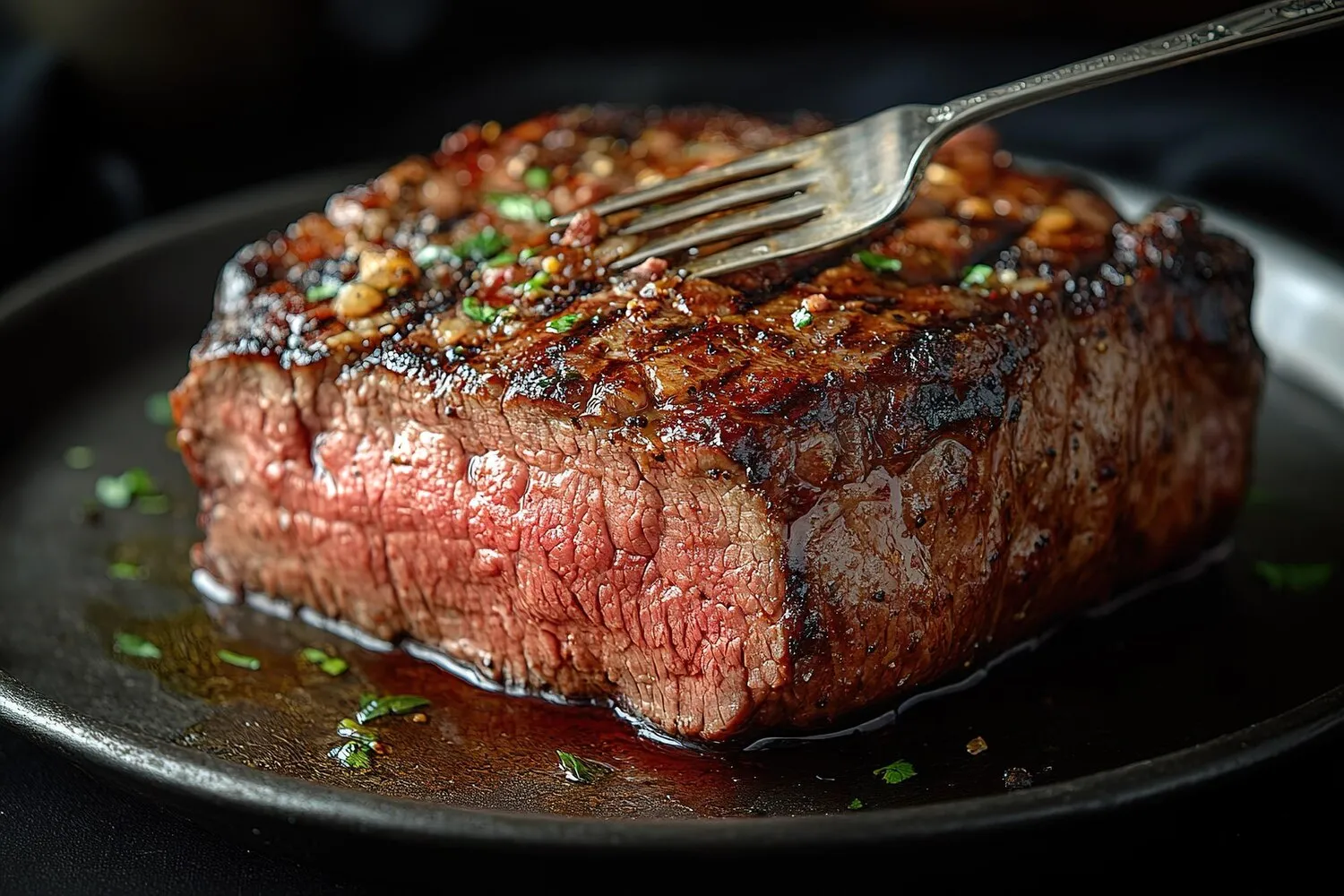
Dry Aged Beef
Various cuts of dry-aged beef, known for their intense flavor and tenderness.
Nutrition Facts
* The % Daily Value (DV) tells you how much a nutrient in a serving of food contributes to a daily diet. 2,000 calories a day is used for general nutrition advice.
Dry aging is a preservation technique with ancient roots, predating refrigeration. Historically, it was a natural byproduct of storing meat. Modern dry aging, however, is a controlled process refined in the 20th century, particularly in American steakhouses, focusing on enhancing flavor and tenderness.
Dry-aged beef is often associated with luxury dining and special occasions, representing a refined appreciation for quality ingredients and culinary craftsmanship.
Steakhouse Culture
Dry-aged beef is a staple in high-end steakhouses, where it is often a signature dish, showcasing the restaurant's commitment to quality and technique. The presentation and preparation are often part of the dining experience.
Connoisseurship
Appreciating dry-aged beef often involves understanding the aging process, the cut of meat, and the desired flavor profile. It encourages a deeper engagement with the food and its origins, akin to wine tasting or cheese appreciation.
Celebratory Meal
Dry-aged beef is often chosen for celebratory meals, birthdays, anniversaries, or business dinners due to its premium quality and the experience associated with consuming it.
Dry-aged beef is characterized by intense savory flavors, often described as nutty, cheesy, or earthy, with a significantly tender texture.
The dry aging process, typically lasting 21-45 days (or even longer), involves storing beef cuts in a controlled environment with specific temperature, humidity, and airflow. This allows enzymatic activity to break down muscle fibers, increasing tenderness. Simultaneously, moisture evaporates from the meat, concentrating its natural flavors. The outer layer, known as the 'pellicle,' dries and hardens, requiring trimming before cooking. The resulting meat exhibits a deep, umami-rich flavor profile, sometimes with hints of blue cheese or roasted nuts, and a melt-in-your-mouth texture. Different cuts, like ribeye, strip steak, and porterhouse, exhibit varying levels of fat marbling, influencing the final flavor and texture nuances.
Trimming the Pellicle
The dry, hardened outer layer (pellicle) must be trimmed away before cooking. Use a sharp knife to remove it completely, leaving only the flavorful meat underneath. Don't be afraid to be generous with the trimming; the pellicle is not edible.
High Heat Cooking
Due to its intense flavor and tenderness, dry-aged beef is best cooked with high heat methods like grilling, pan-searing, or broiling. This creates a beautiful crust while keeping the interior juicy and tender.
Proper Searing
Achieving a good sear is crucial. Pat the meat dry before cooking to ensure proper browning. Use a hot pan with oil or clarified butter and sear for several minutes per side to develop a rich crust.
Resting is Key
After cooking, allow the meat to rest for at least 10-15 minutes before slicing. This allows the juices to redistribute throughout the meat, resulting in a more tender and flavorful final product.
Salt and Pepper Simplicity
Dry-aged beef boasts exceptional flavor on its own. Simple seasoning with salt and freshly ground black pepper is often all that's needed to highlight its natural taste. Avoid overpowering sauces or marinades.
Explore additional Grilled dishes and restaurants
Explore GrilledDiscover top dining spots and culinary experiences in München.
Explore MünchenLearn more about the food culture, restaurant scene, and culinary heritage of Germany.
Explore Germany
